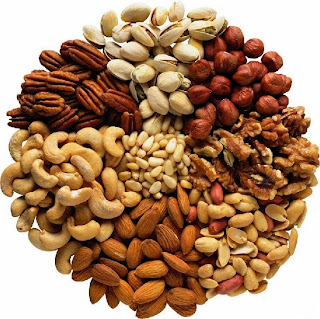Health Benefits
Apple is a fruit rich in antioxidants and a good source of fiber. Quercetin, an antioxidant found in apples, may inhibit lung cancer. Pectin found in apples helps treat diarrhea and constipation by adding bulk to the stool. Other benefits being studied include treatments for diabetes, heart disease, lowering blood pressure, lowering blood levels of LDL, reducing risks of Alzheimer’s, and decreasing bone fractures.
Apple seeds should never be eaten. They contain the poison cyanide.
Let’s not forget the peel. The apple peel contains ursolic acid, a chemical that may prevent muscle wasting.
There may be some truth to “An Apple a Day, Keeps the Doctor Away”.
Recipe
Baked Stuffed Apple
Yield 2 servings
Ingredients
2 medium apples
1/2 cup bran flakes
1/4 cup applesauce, unsweetened
1 Tbsp raisins
1/2 teaspoon vanilla extract
1/4 teaspoon cinnamon, ground
1/4 teaspoon pumpkin pie spice
Directions
1. Preheat the oven to 350°F.
2. Core and slightly hollow out the apples with a spoon, leaving the bottom of the apples intact to create a well for the filling. Place the apples in a pan.
3. In a bowl, combine the bran flakes, applesauce, raisins, vanilla extract, cinnamon, and pumpkin pie spice. Fill and top each apple with the cereal mixture.
4. Bake for 40 minutes, or until the sides of the apples are soft and easily pierced with a knife.
2 medium apples
1/2 cup bran flakes
1/4 cup applesauce, unsweetened
1 Tbsp raisins
1/2 teaspoon vanilla extract
1/4 teaspoon cinnamon, ground
1/4 teaspoon pumpkin pie spice
Directions
1. Preheat the oven to 350°F.
2. Core and slightly hollow out the apples with a spoon, leaving the bottom of the apples intact to create a well for the filling. Place the apples in a pan.
3. In a bowl, combine the bran flakes, applesauce, raisins, vanilla extract, cinnamon, and pumpkin pie spice. Fill and top each apple with the cereal mixture.
4. Bake for 40 minutes, or until the sides of the apples are soft and easily pierced with a knife.
Nutrition Information
U.S. Apple Association Members
NY Apples Are a Smart Choice for Healthy Eating
Kelly Springer, RDN
Kelly Springer, RDN
1. U.S. Apple Association
2. Apple Recipes, Washington Apple Commission
Ensure accurate, cost-effective nutritional analysis and food nutrition facts labels for your recipes and menus, using an extensive research database. An excellent service for the Media, Cookbook Publishers, Writers, Chefs, Recipe Websites, and Blogs. Your readers will enjoy and benefit from the Nutrition information.
For more information, visit Dietitians-Online Nutritional Analysis Services
contact:
Sandra Frank, Ed.D, RDN, FAND
recipenews@gmail.com
954-294-6300





















